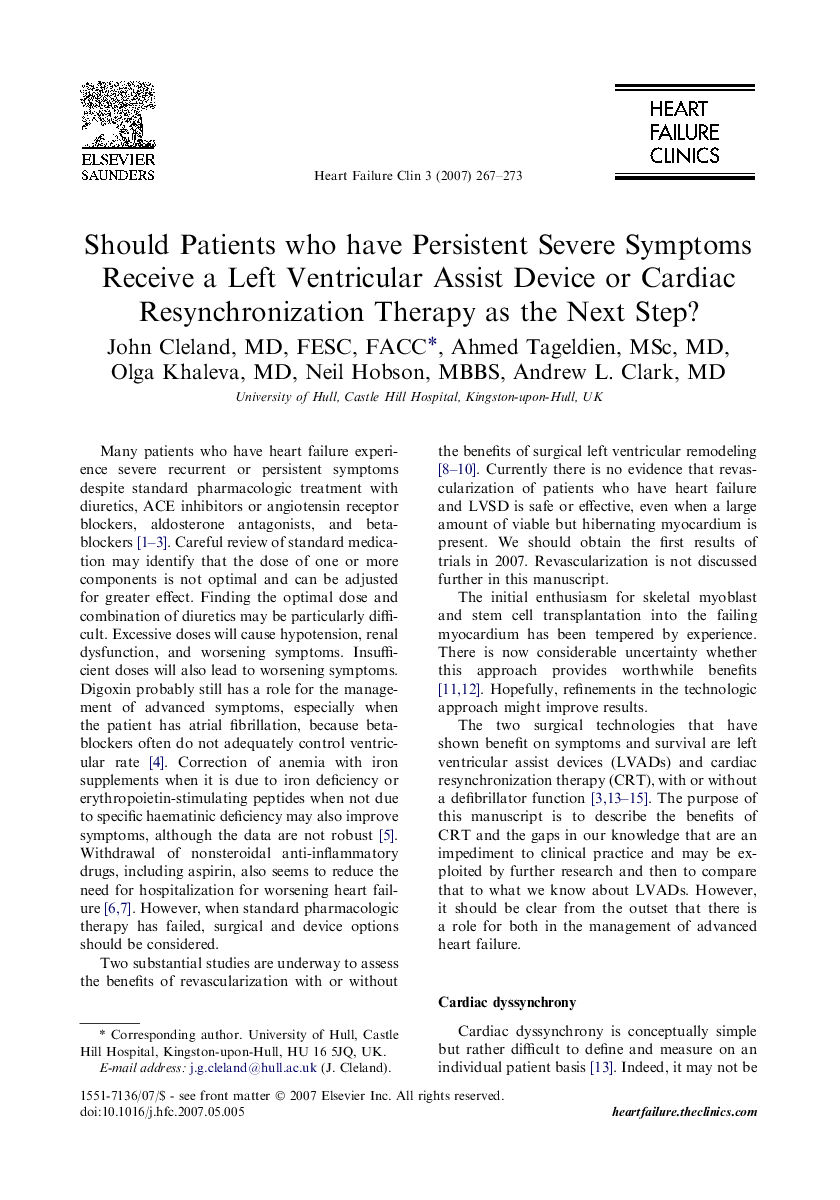| کد مقاله | کد نشریه | سال انتشار | مقاله انگلیسی | نسخه تمام متن |
|---|---|---|---|---|
| 3473940 | 1233106 | 2007 | 7 صفحه PDF | دانلود رایگان |

Currently, cardiac resynchronization therapy (CRT) should be considered before a left ventricular assist device for most patients who have moderate or severe left ventricular systolic dysfunction and have not responded symptomatically to conventional pharmacologic measures. There is little evidence that the severity of cardiac dyssynchrony as measured using current techniques is useful in predicting the benefits of CRT. QRS duration on the surface ECG is a surrogate marker of the severity of the left ventricular ejection fraction as well as of several types of dyssynchrony. More clinical trials are required to determine whether excluding patients who have QRS duration less than 120 msec or those who have no evidence of dyssynchrony from implantation of CRT is appropriate. Perhaps all patients who have moderate or severe left ventricular systolic dysfunction should be considered for CRT, either to improve symptoms if they are persistent or relapsing, or to improve outcome. In the longer-term future, it is possible that the development of less expensive, small, and safe left ventricular assist devices will supplant the role of both CRT and CRT-defibrillator devices.
Journal: Heart Failure Clinics - Volume 3, Issue 3, July 2007, Pages 267–273